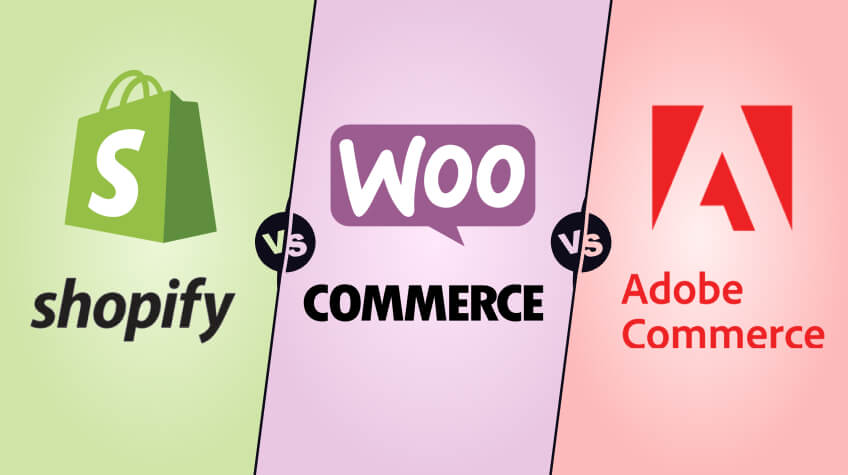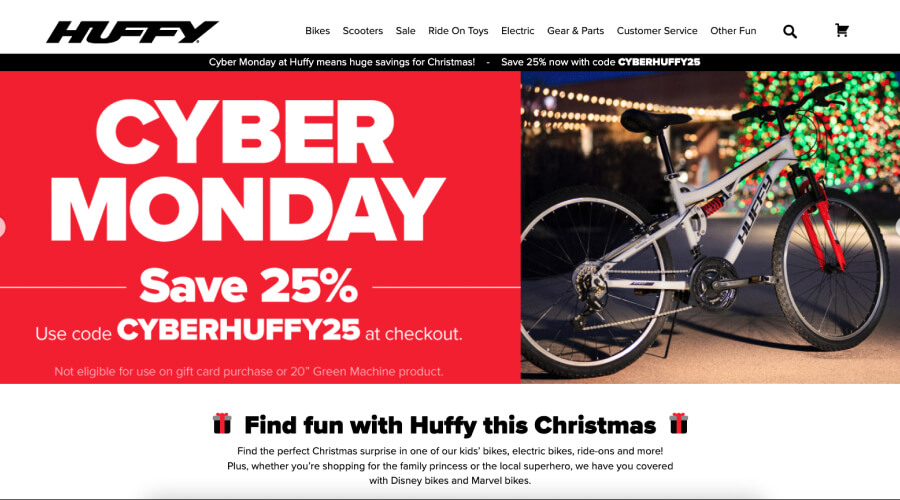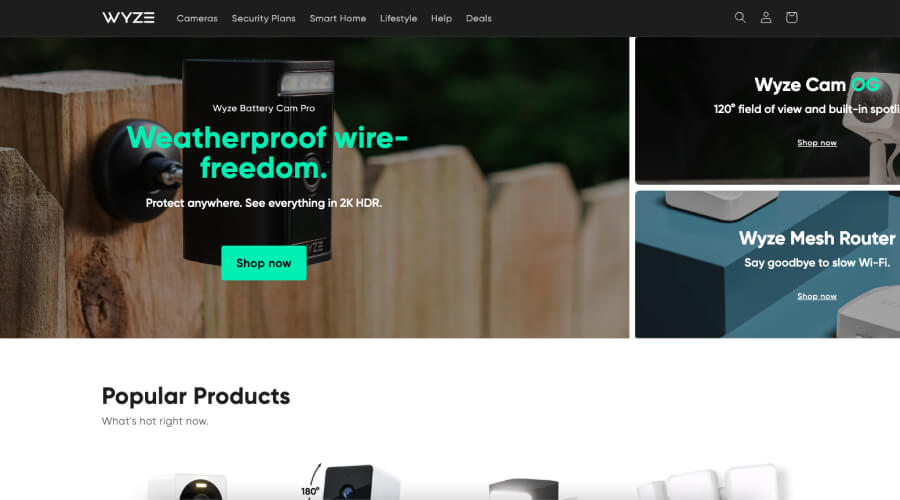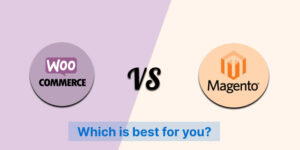
Introduction
In the dynamic landscape of online commerce, selecting the optimal platform can have a significant impact on your business’ success. As the digital marketplace thrives, three prominent contenders Shopify vs WooCommerce vs Adobe Commerce stand out for their distinct features and functionalities. Each platform caters to diverse business needs, from user-friendly simplicity to robust scalability.
In this exploration, we delve into the nuances of Shopify, WooCommerce, and Adobe Commerce, providing a comprehensive guide to empower entrepreneurs in making an informed choice that aligns with their specific goals and aspirations. Join us to find the perfect digital storefront for your business.
Shopify vs WooCommerce vs Adobe Commerce
Here is the detailed report
1. Shopify
➥ User-friendly Interface:
- Shopify boasts an easy-to-use interface, making it accessible for entrepreneurs with varying technical expertise. The platform’s design focuses on simplicity, streamlining the process of setting up and managing an online store.
- Quick Setup and Minimal Technical Knowledge Required:
- One of Shopify’s standout features is its rapid setup. Entrepreneurs can establish their online presence swiftly without requiring extensive technical know-how. It is particularly useful for small businesses and individuals entering the e-commerce realm.
➥ App Store for Extended Functionalities:
Shopify’s App Store is a trove of apps and extensions, allowing users to enhance and customize their online stores with additional functionalities. The App Store provides diverse solutions to meet various business needs, from marketing tools to inventory management.
➥ Integrated Payment Solutions:
By offering integrated payment solutions, Shopify simplifies the payment process. Users can seamlessly accept payments through multiple channels, including debit and credit cards. This integrated approach reduces friction in the purchasing process for customers and facilitates efficient transaction management for businesses.
➥ Hosting and Security:
Shopify provides a fully hosted solution, eliminating users needing to manage server configurations or worry about hosting infrastructure. This not only simplifies the technical aspects but also ensures reliable performance. Moreover, Shopify strongly emphasizes security, implementing robust measures to protect customer data and instilling confidence in businesses and their customers.
Also Read: Why is Shopify Popular in e-commerce? Main Reasons
2. WooCommerce
➥ Flexibility and Customization Options:
WooCommerce, as a WordPress plugin, stands out for its unparalleled flexibility. Online stores can be customized to meet a business’s needs, from customizing the storefront’s appearance to implementing unique features. This adaptability caters to a diverse range of industries and business models.
➥ Integration with WordPress Content Management System:
One of WooCommerce’s strengths is its seamless integration with the WordPress content management system. This synergy enables users to combine the power of e-commerce with the versatility of WordPress, allowing for the creation of content-rich websites and effective management of both products and editorial content.
➥ Large Community Support:
With a vast and active community, WooCommerce benefits from shared knowledge and support. Users can tap into forums, tutorials, and community-driven resources, fostering a collaborative environment where troubleshooting and sharing best practices are commonplace.
➥ Open-Source Nature Allows for Code Customization:
WooCommerce’s open-source architecture empowers businesses to delve into the source code, facilitating extensive customization. This level of access is invaluable for businesses with specific technical requirements, enabling them to tailor the platform to their exact specifications.
➥ Extensive Plugin Ecosystem:
Leveraging the power of WordPress, WooCommerce boasts a vast plugin ecosystem. Users can choose from various plugins to enhance functionality, ranging from payment gateways to marketing tools. This expansive ecosystem provides businesses the tools to create a fully tailored and feature-rich online store.
3. Adobe Commerce (Magento)
➥ Robust and Scalable for Large Enterprises:
Adobe Commerce, formerly known as Magento, distinguishes itself with its robust and scalable architecture, catering to the needs of large enterprises. The platform is designed to handle high traffic volumes, extensive product catalogs, and complex operations, ensuring a seamless experience for businesses with significant scale.
➥ Advanced Customization Options:
Adobe Commerce offers increased customization, enabling businesses to create a unique online presence. From the look and feel of the storefront to intricate backend processes, the platform provides advanced customization options, allowing enterprises to align their digital presence with their brand identity and specific requirements.
➥ Multi-store Capabilities:
Adobe Commerce excels in accommodating businesses with multiple brands, regions, or product lines. Its multi-store capabilities enable enterprises to manage and operate distinct online stores from a single admin interface. This centralized control enhances efficiency and simplifies the management of diverse digital storefronts.
➥ Strong Support for Product Variants and Complex Catalogs:
With a focus on versatility, Adobe Commerce offers robust support for product variants and complex catalogs. This element is particularly useful for businesses with various product offerings, allowing them to present a wide range of options, configurations, and variations to customers in a user-friendly manner.
➥ B2B Functionality for Wholesale Businesses:
Adobe Commerce extends its capabilities to the B2B sector, providing specialized functionality for wholesale businesses. This includes features such as bulk ordering, custom pricing, and account management tools tailored to meet the specific requirements of businesses engaged in wholesale transactions. This B2B focus positions Adobe Commerce as a comprehensive solution for enterprises involved in both retail and wholesale operations.
Comparison
➥ Ease of Use
Shopify:
- Known for its simple interface, it is available to users with minimal technical expertise.
- Offers a straightforward setup process, simplifying the onboarding experience for new users.
WooCommerce:
- Requires a basic understanding of WordPress but provides flexibility and customization options.
- It might have a steeper learning curve for beginners, resembling Shopify.
Adobe Commerce:
- Geared towards users with more technical ability.
- It offers advanced features but may need to be more intuitive for those with a technical background.
➥ Cost
Shopify:
- Subscription-based pricing with plans catering to various business sizes.
- Additional costs for apps and transaction fees.
WooCommerce:
- Generally more cost-effective as it operates as a WordPress plugin.
- Costs include hosting, domain, and any premium plugins or themes.
Adobe Commerce:
- Typically, it involves higher upfront costs, suitable for larger enterprises.
- Additional costs for customization, extensions, and ongoing maintenance.
➥ Customization
Shopify:
- Relies on its App Store for additional functionalities.
- Customization choices may be more restricted compared to open-source platforms.
WooCommerce:
- Highly customizable, especially for users familiar with WordPress.
- Expansive library of plugins and themes for added functionality and design.
Adobe Commerce:
- Offers advanced customization options for businesses with specific requirements.
- Well-suited for enterprises seeking a tailored and unique online presence.
➥ Scalability
Shopify:
- Scalable for small to medium-sized businesses.
- Limited scalability for very large enterprises with complex needs.
WooCommerce:
- It scales well for many businesses, from small startups to larger enterprises.
- Depends on the hosting infrastructure for optimal performance.
Adobe Commerce:
- Specifically designed for scalability, making it appropriate for large enterprises with complicated needs.
- Robust architecture handles high traffic and extensive product catalogs.
➥ Security
Shopify:
- Provides secure hosting and adheres to industry-standard security practices.
- Automatic updates and SSL certificates contribute to a secure environment.
WooCommerce:
- The chosen hosting provider influences security.
- Regular updates and adherence to WordPress security practices are crucial.
Adobe Commerce:
- Emphasizes security with features like PCI compliance.
- Regular security updates and a focus on protecting sensitive customer data.
➥ Support and Community
Shopify:
- Offers 24/7 consumer support.
- Active community forums and documentation.
WooCommerce:
- Strong community support with forums and documentation.
- Official support is available for paid WooCommerce extensions.
Adobe Commerce:
- Provides support through various channels, including phone and email.
- Robust community forums and extensive documentation.
➥ Use Cases
Shopify:
- Perfect for small to medium-sized businesses examining for a hassle-free and user-friendly e-commerce solution.
- Suited for entrepreneurs who prioritize simplicity and ease of use.
- Well-suited for businesses without extensive technical expertise or resources for complex setups.
- This is useful for those who want a quick and straightforward online store setup.
WooCommerce:
- Well-suited for businesses with an existing WordPress site seeking seamless integration of e-commerce functionality.
- Customization options make it ideal for businesses that need a unique and tailored online existence.
- Provides flexibility for businesses with specific design and functionality requirements.
- Benefits companies want to leverage content and commerce on the same platform.
Adobe Commerce:
- Tailored for large enterprises with complicated requirements and a focus on scalability.
- Suited for businesses requiring advanced customization and feature-rich capabilities.
- Ideal for those dealing with extensive product catalogs, intricate inventory management, and diverse storefronts.
- Well-equipped for enterprises engaged in both retail and wholesale operations, especially in the B2B space.
- Considerations for Decision-Making
➥ Business Size and Scale
Shopify:
- Well-suited for small to medium-sized businesses with straightforward requirements.
- It may have limitations for very large enterprises with complex needs.
WooCommerce:
- Scales are effective across various businesses, making them suitable for small startups and larger enterprises.
- Offers flexibility for growth and expansion.
Adobe Commerce:
- Specifically designed for large enterprises dealing with extensive product catalogs and complex operations.
- Ideal for businesses with high scalability requirements.
➥ Technical Expertise
Shopify:
- It needs the tiniest technical expertise, making it accessible to users with varying skill levels.
- Suitable for entrepreneurs without a strong technical background.
WooCommerce:
- More technical knowledge is beneficial, especially for businesses customizing their WordPress site.
- Ideal for users familiar with WordPress and seeking a high level of customization.
Adobe Commerce:
- Geared towards users with advanced technical expertise who can leverage its powerful customization options.
- Suited for enterprises with in-house development teams or access to technical resources.
➥ Budget Constraints
Shopify:
- Subscription-based pricing, with plans catering to different budget levels.
- Additional costs may arise from transaction fees and premium apps.
WooCommerce:
- Generally more cost-effective as it operates as a WordPress plugin.
- Costs include hosting, domain, and any premium plugins or themes.
Adobe Commerce:
- It involves higher upfront costs, making it more suitable for businesses with a substantial budget.
- Ongoing costs include customization, extensions, and maintenance.
➥ Long-Term Goals and Scalability
Shopify:
- Well-suited for businesses with moderate growth expectations.
- It may have limitations for enterprises with ambitious long-term scalability goals.
WooCommerce:
- Provides flexibility for businesses with varying long-term goals.
- Scales effectively, making it suitable for businesses planning substantial growth.
Adobe Commerce:
- Specifically designed for enterprises with ambitious long-term scalability goals.
- Ideal for businesses planning significant expansion and dealing with complex operations.
Also Read: Choose the Right Platform Shopify vs Magento (Adobe Commerce)
Examples
➥ Shopify Examples
1. Allbirds (Footwear)

Allbirds showcases eco-friendly footwear seamlessly on Shopify, providing a clean and user-friendly interface for a streamlined shopping experience.
2. Asphalte (Clothing)

Asphalte’s Shopify-powered site delivers a stylish and intuitive online shopping platform, emphasizing quality and trendiness in clothing.
3. Taylor Stitch (Clothing)

Taylor Stitch uses Shopify to present sophisticated men’s clothing elegantly, offering a tailored and user-friendly shopping experience.
➥ WooCommerce Examples
1. Amundsen Sports (Winter Sports)

Amundsen Sports highlights WooCommerce’s versatility, presenting a diverse range of winter sports apparel and accessories.
2. JOCO Cups (Reusable Drinkware)

JOCO Cups thrives on WooCommerce’s customization, boasting a minimalist design for a seamless display of reusable drinkware.
3. Kemo Sabe (Luxury Western Fashion)

Kemo Sabe’s WooCommerce success in luxury Western fashion is evident in its aesthetic homepage centered around a captivating hero image.
➥ Adobe Commerce Examples
1. Huffy Bikes (Bicycles)

Huffy Bikes, migrated to Adobe Commerce by United Wheels, showcases scalability with a professional and innovative website for multiple bike brands.
2. Wyze (Home Security)

Wyze, a tech-forward brand, exemplifies Adobe Commerce’s tech sector capabilities with its range of security cameras and home products.
3. Lovesac (Customizable Furniture)

During the pandemic, Lovesac’s move online using Adobe Commerce demonstrates the platform’s adaptability for dynamic and scalable e-commerce in customizable furniture.
Also Read: WooCommerce vs Magento (Adobe Commerce) Which is Best
Conclusion
In the dynamic realm of e-commerce, the choice between Shopify, WooCommerce, and Adobe Commerce hinges on distinct business needs. For small to medium-sized businesses valuing simplicity, Shopify’s user-friendly interface shines. WooCommerce, seamlessly integrated with WordPress, caters to those seeking customization and content-commerce harmony.
Meanwhile, Adobe Commerce emerges as a powerhouse for large enterprises, offering unparalleled scalability and advanced customization. As businesses navigate their unique paths, considerations of size, technical expertise, budget, and long-term goals become pivotal. Finally, the judgment rests on aligning the preferred platform with the intricacies and aspirations that define each business.






